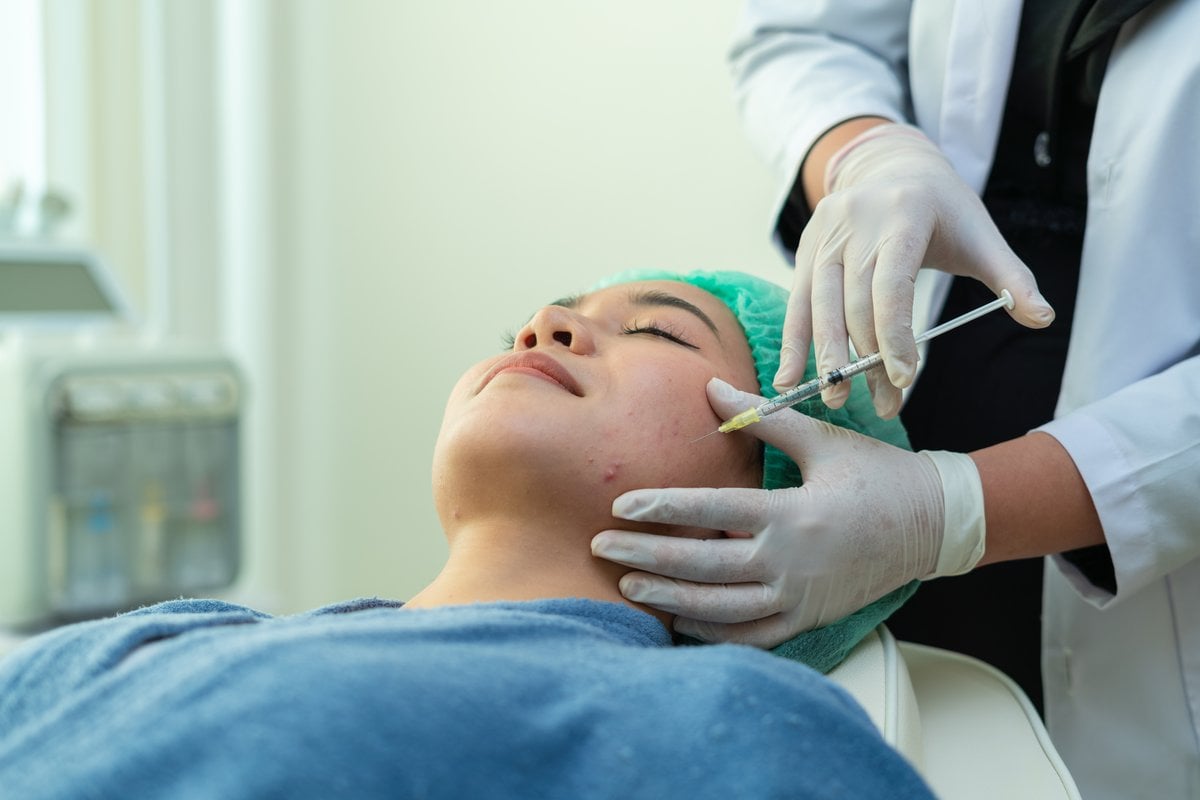
Babies getting anti-wrinkle injections?! That’s madness, they have the most plump, collagen-filled skin out of anyone!
Thankfully, the term ‘Baby Botox’ has nothing to do with newborns or toddlers.
Botox has become the colloquial term used in conversation when discussing anti-wrinkle injections, but Botox is a brand name and only one of quite a few options of medication used to freeze or soften lines.
The key ingredient is a toxin produced by the bacterium Clostridium botulinum. It was first discovered for medical use in the 1970s when it was found to improve weakened eye muscles and various muscle disorders by freezing the area when used in tiny doses.
The brand Botox is one of the branded medications available, with Azzalure and Dysport also commonly used.
The medicine is administered in units, and priced per unit accordingly. The exact price of each brand and unit varies from clinic to clinic, and you may be charged differently depending on if a registered nurse or a doctor performs your procedure.
When injected into muscles the clear, water-like liquid partially paralyses the area until the toxin wears off, which happens over a two to six-month period. It then minimises the look of wrinkles and fine lines because your muscles aren’t triggering the formation of creases caused by movement.
How quickly it lasts will depend on your body’s metabolism, and first-time users often note the treatment may not last as long initially, but may last longer after the second treatment.
Watch: Mia Freedman talks about botox and other similar procedures. Post continues after the video.
As a general guide, the basic recommendation from the manufacturer of Botox is four units for each of the injection sites, so 20 in total. Most dermatologists administer between 10 and 50 total units, depending on their patient's needs and history.
For Dysport, depending on the severity of your lines, you may need anywhere from 30 to 60 units. A mathematical equation is used to determine your dose as well as a discussion with your injector about your desired result.
Listen: In another episode of This Glorious Mess, Andrew and Holly discusses discuss the question 'How Young Is Too Young For Cosmetic Surgery?'. Post continues after this podcast.
This is where the term ‘Baby Botox’ comes in. We’ve chatted about it on You Beauty before. It’s essentially the term used to describe anti-wrinkle injections in smaller doses.
Some people prefer a fully frozen face or a forehead that doesn't move, and of course that’s totally fine. But there’s a newer cohort of people seeking anti-wrinkle injections who still want movement in their expressions and lines on their face, just maybe less pronounced.
Also referred to as 'Micro Botox’, fewer units are used to provide a softer look than the traditional use of more units.
"The process is the same as regular Botox injections,” Dermatologist Dr Chwalek told Byrdie. "The only real difference is the amount used and possibly the number of total injections.”
“The idea is that we don't completely relax the muscle so that there is no movement (ie. frozen), but instead weaken it enough so that it doesn't contract with the same intensity resulting in a smoother appearance of any facial lines. Rather than look completely frozen, there is still some natural facial expression.”
Baby Botox, or Micro-anti-wrinkle injections, are best suited to younger people who want to get a head start on anti-ageing. We’re talking people in their late 20’s and early 30’s, not teenagers.
It’s also a really good approach for anyone of any age who is a first timer and has fears of the frozen look, or those with deeper lines who still want them to be visible, but less pronounced.
A smaller dose won't last quite as long, but it’ll also be cheaper.
Image: Getty.
Calling all Mums of kids aged 1-4 or soon-to-be Mums! Take this short Mamamia survey now to go in the running to win a $50 gift voucher.



























































































